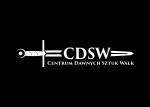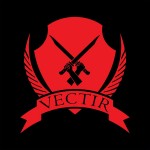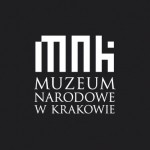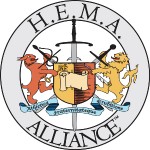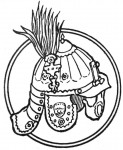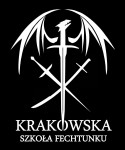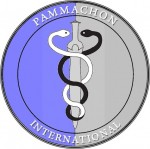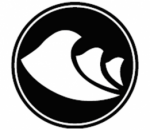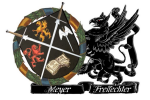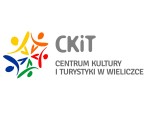FIGHT BOOKS AS SOURCES OF PRACTICAL KNOWLEDGE ON HISTORICAL FENCING
April 6, 2019
Introduction: what is “embodied research?”
Since Marcel Mauss' memorable 1935 lecture on the “techniques of the body” (les techniques du corps) and the influential publication (Mauss 2001) which followed, the body and its self-agency have gradually become of interest for scholars. By the end of the 20th century, the so-called “bodily turn” became an important trend in the fields of anthropology, sociology, and later on, also in historiography (Clever and Ruberg 2014). This article, in accordance with the general topic of the session it is a part of, is concerned with the significance of this discipline for historical research, and more precisely, for the possibility of modern reconstruction of historical “techniques of the body” based on a strictly defined category of historical sources, the so-called “fightbooks”. The term is currently used for historical manuals, written by fencers in the previous ages (in a broad sense, therefore also including e.g. wrestlers and boxers), whose goal was to convey knowledge on effective combat (Walczak 2009). Such knowledge,currently most frequently referred to as “embodied knowledge”,laid down in the form of historical notation, is a very particular kind of text since its understanding demands not only deciphering of the words it uses or the interpretation of its iconography, but also application of all the information found therein to movement of a modern human body.
In the recent years, fight books and similar notations of skills related to bodily movement (e.g. dance or crafts), as well as other material artefacts related to practical abilities (such as historical tools), have become an object of interest for a growing group of researchers whose goal is to investigate the possibility of gaining additional knowledge about their history by experiencing their operation in practice. Before I move on to evaluate the insights provided by this category of historical sources and the method described here in regard to knowledge of historical fencing, I should first characterize the general assumption of the embodied research movement. To illustrate it, I am going to quote some of its representatives. Emphasising the value of researcher's long-term physical involvement with the researched subject, in order to reveal further layers of knowledge hidden inside, Kate Smith and Leonie Hannan conclude that “external 'sources consulted to interpret an object are not always texts, objects, or quantitative data. Bodily engagement with objects is another way to acquire knowledge” (Smithand Hannan 2017:59). Ben Spatz, one of the leading theoreticians and practitioners of embodied research, also stresses the importance of long-term commitment: “Like the scientist, the researcher who works through embodied practice finds that technique seems to expand and open up in proportion to the amount of attention it is paid” (Spatz 2015:63). In turn, Eric Burkart, despite his critical attitude towards the possibility of reconstructing historical forms of movement on the basis of historical notations, agrees that „Embodied practices like music or martial arts are hard to understand for non-practitioners who are lacking practical knowledge of the subject”(Burkart 2016:9).
Such observations have allowed Iris Clever and Willemijn Ruberg to conclude decisively: “Thus, bodies, objects, and techniques are no longer treated as silent objects but as important actors during encounters. In this way, praxiography might offer historians of the body an interesting method to study the physical body as an actor in history, by analysing the ‘actions’ of bodies, techniques,materials, and sites in practice instead of historical representations” (Clever and Ruberg 2014:554).
To sum up, we can say that embodied research works on the following assumptions:
1) it is impossible to gain full knowledge of the functioning of the human body and items created as its extension (i.e. tools) without practical somatic skills;
2) long-term, repeated physical engagement with the researched subject is necessary to discover deeper layers of knowledge which cannot be reached solely by abstract reasoning;
3) the culturally active role of the body needs to be appreciated more, as it is the first tool used by humans to discover and modify the world around them since the beginning of their history;
4) the non-material creations of the human body, such as movement,need to be considered a valid research subject, on par with other cultural artefacts.
1. Movement notation and transfer of knowledge
As it has already been mentioned in the introduction, the subject of embodied research are bodily actions, and hence physical engagement in order to gain knowledge about them is its main tool. Speaking of historical methods of using the body such as historical fencing, we need to realize that according to the classical approach, the modern researcher can access them only through material cultural artefacts,indirect descriptions, and movement notations, such as, respectively:weapons, chronicles or other accounts describing battles, and fencing manuals (Burkart 2016). The most direct, and therefore, most valuable, of those sources are of course notations, whose main or only goal is to transfer substantial knowledge of movement in the form of more or less detailed instructions.
However, Ben Spatz notices that even the best movement notations are unable to teach movement in a truly objective way. To illustrate his point better, Spatz suggests a distinction of two terms: “practice”and “technique”. The first “refer[s] to concrete examples of actions, moment of doing, historical instances of materialized activity,” the other is “the knowledge content of specific practices (...) the knowledge of what is reliably possible given the similarities we find in our bodies and environments” (Spatz 2015:41). Somewhat more simply, practice can mean all particular instances when an action is performed (e.g. blinking an eye,delivering a hit with a sword, or peeling a hard-boiled egg), while technique is the knowledge of the possibilities offered by the body and the environment (physical and cultural), which makes effective practice possible. This perspective makes clear that practice is elusive, related to a particular body, place and time, therefore it can be neither accurately preserved nor precisely repeated. It can be proven if one tries, for example, to peel two eggs exactly in the same way. The task is impossible because of the differences of the physical structure of particular eggs and the inescapable imperfection of the human body which can hardly ever repeat the same exact movement (it even applies to machines, which is often painfully experienced by entrepreneurs ordering half-finished products which in theory should be standardized). On the other hand, technique is the knowledge distilled from the observation of practice, which takes the physical and cultural conditions into account to formulate the rules of effective action, as a kind of instruction for practice.
If we define these terms in this way, it becomes clear that the modern researcher has no access to historical practice, since it cannot be preserved in any way. Historical movement notations contain technique, which is knowledge concerning effective action, processed through cultural factors. Such knowledge, contained in the historical notation, is then deciphered by modern researchers, who do it through the agency of their own culture to create a new version of the technique. This version becomes the basis for new practice, even though it does not necessarily have much in common with historical practice.
HISTORY MODERNITY
Technique Culture Notation Culture Technique Culture Practice
Practice
BODY AND PHYSICS

For Eric Burkart, this fact is one of the key arguments excluding the possibility of “reconstruction” of historical embodied practices (Burkart 2016:24). In reality, however, the situation maybe more nuanced: the modern researcher is able to access the historical technique not only through notation, but also by the means of their own body. This assumption comes from the observation that the biology of the human body changes very slowly, even more so than the natural environment, and the laws of physics which govern the movement of bodies do not change at all (according to the current state of knowledge). In general, this may mean that if a researcher correctly identifies the historical context of a given movement skill and understands the culturally-defined criteria of its effectiveness,they would be “forced” to reach a practice very similar to the historical one during the learning process, using a body restricted by the same laws of physics as that of a historical user (Spatz2015:61). Therefore, it seems that the body can be considered a useful research instrument, which allows one to overcome the limitations of the solely text-based analysis of movement notation(Jaquet 2016; Talaga and Talaga 2018). To evaluate more accurately whether such hopes are justified, in the next two chapters I am going to present examples of successful use of movement notation to increase our understanding of cultural artefacts, and the most significant difficulties related to the pursuit of exact“reconstruction” of historical movement forms.
2. Movement notation increasing the understanding of material culture
Some categories of cultural artefacts are closely related to movement skills which are currently lost. First of all, they include specialist tools and products, e.g. ancient looms and textiles, made mostly of organic materials which are generally not preserved in archaeological material. Still, researchers can identify clay loomweights and imprints of textiles on clay vessels, and gain significant information on weaving techniques (Olofsson et al. 2015).Such artefacts also include weapons, since there are specimens whose precise function is difficult to infer, as well as ones preserved only in iconography (Walczak 2009). Both cases are very troublesome to researchers, who have to decide if they are dealing with a rare kind of weaponry of a very particular function, a ceremonial weapon,or a modern forgery (or, in the case of iconography, a mocking depiction, cf. Żygulski 1978).
Movement notations related to marital arts and the practical knowledge of the related artefacts gained through embodied research can prove indispensable in such situations. Below I mention two examples: the so-called “Teutonic Knight's estoc” from the Czartoryski Collection (currently at the Wawel armoury); and an experiment challenging the incorrect generalisations still circulating in arms and armour studies literature concerning the functionality of the late medieval full plate armour.
The aforementioned “Teutonic Knight's estoc” from the Wawel armoury is a good illustration of an extreme case, where the lack of an embodied ‘link’ in the study of non-typical armaments caused an object to be considered a forgery simply because it was incomprehensible to researchers at the time of their study1.The weapon was a subject of research since the 1950s, and has been a mystery ever since because of its mace-shaped hilt, spiked crossguard, short handle, square blade unsuitable for cutting, and great weight (Fig. 2). Rivalling interpretations saw it as a forgery,solely ceremonial weapon, or even one of the Grunwald Swords (Żygulski 1960).

The weapon's puzzling characteristics could only be explained when fencing treatises describing the methods of fighting in full plate armour were taken into account. There, depictions and descriptions of anti-armour swords, previously unknown to arms and armour researchers, were found together with explanations of related techniques which provided a context explaining all the elements of the weapon incomprehensible before (Talaga 2013, 2015).
The second example I would like to discuss is the multi-stage experiment conducted by Daniel Jaquet's team. The goal was to verify the actual limitations to one's mobility imposed by a late medieval plate armour (Jaquet and Deluz 2018; Jaquet et al. 2016). As the main experimenter, Jaquet was provided with an accurate replica of the armour, and in 2011 began to practice movement and fighting in it,which he continued for a few years. Fencing manuals and chronicles of the same era as the armour were used as the point of reference for his mobility training2.The experiment included a number of biomechanical measurements and specialist movement analyses conducted according to methods used in sports science which allowed for a precise evaluation of the impact of a 15th-century plate armour on one's safety, stamina,and mobility.
This way, it was proven that, contrary to popular belief, an armoured knight could walk, run, jump, crawl, climb, mount a horse easily, use a weapon in a dynamic way, make use of wrestling techniques, and even perform acrobatic moves, at all times being largely protected from wounds by most common melee weapon types, as well as against injuries from falls, collisions, or twisted limbs.
3. Epistemological problems in movement reconstruction
However promising the above-mentioned examples might be considered,they cannot be called proper movement reconstructions. In fact, they mainly discover the movement potential found in cultural artefacts: they demonstrate what could have been done with a particular object,but not how it was actually used. Using Bent Spatz's terminology:they only create modern practice but do not reconstruct historical technique. Real reconstruction of historical movement skills is not only concerned with imitating drawings or practical improvisation with replicas of given items. It needs constant dialogue between modern practice with accurate replicas of proper equipment and the notation of historical technique, as well as a methodical approach which could achieve measurable, clear, and verifiable results. What is more, any valuable method of reconstruction has to take into account the difficulties related with modern readings of historical movement notations: the role of imitation, the influence of cultureon the methods of using the body, and gaps in the notation preserved which may encourage looking for analogies (Burkart 2016; Jaquet 2016;Walczak 2011).
Imitation is an important part of movement learning (Śmiglewska2015), since it complements teacher's verbal instruction with the elements which are hard to conceptualize, and positively affects the learning curve. Modern researchers trying to learn movement from historical manuals have no access to living teachers whom they could imitate, so they are forced to find the optimal movement forms through long-term experimentation. What is more, the way a given person moves, and even what kinds of movement they can imagine, is to a certain degree shaped by culture. Ben Spatz calls this phenomenon a“substrate” or “sedimented agency,” demonstrating that a body subjected to long-term training adapts to the action being practised on many levels, including the physiological. If we add the observation that a large part of training that a person undertakes is unconscious and dictated by culture (e.g. through the forms of moving around preferred in a given community), it has to be expected that the researchers' bodies might differ from those of the authors of historical notations. This may, in turn, make the actions which were natural to historical users impossible to perform, or even inconceivable, to a modern researcher. The problem may be particularly severe in the case of disciplines where movement is highly aestheticized (e.g. dance, music, theatre, religious rites, or courtly ceremonial), while in the case of more pragmatic skills, such as martial arts or craft, the role of objective laws of physics is larger and the margin of arbitrariness more narrow, thus making the potential reconstruction more probable (cf. Spatz 2015:61).
Finally, the preserved fight books and other movement notations are rarely complete (Walczak 2009, 2011), which poses the research problem of filling in the gaps found in the material. In such cases,it seems a tempting perspective to look for analogies in currently existing similar traditions (as in the case of the discipline known as ethnoarchaeology), however because of the afore-mentioned role of culture, it is methodologically risky (Walczak 2011; Burkart 2016;Jaquet 2016).
Summary: research perspectives
The review above shows that, even though fencing manuals are most frequently movement notations created to make learning possible, the use of their embodied knowledge by modern people poses numerous problems. Even though they let us reach easy and convincing conclusions concerning the possibilities of movement offered by cultural artefacts, the exact reconstruction of historical technique is, at least, complicated, if possible at all. Until now, no generally accepted method of structured movement reconstruction on the basis of historical notation has been proposed. However, it should be stressed that in the recent years the issue became the subject of academic reflection and first positive propositions have appeared (Walczak 2011; Jaquet 2016; Talaga and Talaga 2018). They propose to make use of the accomplishments of experimental archaeology, as well as quantitative and qualitative methods, for their attempts at assuring the formalization, verifiability, and objectivity of embodied research based on historical movement notations.
Literature
Burkart Eric, 2016. Limits of Understanding in the Study of Lost Martial Arts. ACTA PERIODICA DUELLATORUM 4 (2), s. 5-30.
Clever Iris, Ruberg Willemi Jn, 2014. Beyond Cultural History? The Material Turn, Praxiography, and Body History. HUMANITIES 3, s. 546-566.
Jaquet Daniel, 2016. Experimenting Historical European Martial Arts, a Scientifc Method? [w:] Jaquet D., Verelst K, Dawson T. Late Medieval and Early Modern Fight Books: Transmission and Tradition of Martial Arts in Europe (14th-17th Centuries). Leiden, s. 216-245.
Jaquet Daniel, Mazure Alice Bonnefroy, Armand Stéphane, Charbonnier Caecilia, Ziltener Jean-Luc, Kayser Bengt, 2016. Range of motion and energy cost of locomotion of the late medieval armoured fghter: A proof of concept of confronting the medieval technical literature with modern movement analysis. HISTORICAL METHODS: A JOURNAL OF QUANTITATIVE AND INTERDISCIPLINARY HISTORY 49 (30), s. 169-186.
Jaquet Daniel, Deluz Vincent, 2018. Moving in Late Medieval Harness: Exploration of a Lost Embodied Knowledge. JOURNAL OF EMBODIED RESEARCH 1 (1), s .2 (20:49)
Mauss Marcel, 2001. Sposoby posługiwania się ciałem. [w:] Socjologia i Antropologia (tłum. M. Król, K. Pomian i J. Szacki), Kraków, s. 391–413.
Olofsson Linda, Andersson Strand Eva Brigitta, Nosch Marie-Louise, 2015. Experimental testing of Bronze Age textile tools. [w:] Tools, Textiles and Contexts. Investigating Textile Production in the Aegean and Eastern Mediterranean Bronze Age Philadelphia, s. 75–100.
Smith Kate, Hannan Leonie, 2017. Return and Repetition: Methods for Material Culture Studies. THE JOURNAL OF INTERDISCIPLINARY HISTORY 48 (1), s. 43-59.
Spatz Ben, 2015. What a Body Can Do. London.
Śmiglewska Mirosława, 2015. Etapy postępowania prakseologicznego. [w:] Śmiglewska M. Lewandowski M. Sarwińska J.(red.) O procesie nauczania
ruchu, Wybrane zagadnienia metodyki edukacji fzycznej. Wrocław, s. 48-74.
Talaga Maciej, 2013. A Unique Genuine Kampfschwert from the 15th century held by Wawel Royal Castle’s Armoury, Kraków, Poland. ACTA PERIODICA
DUELLATORUM 1, s. 7-28.

